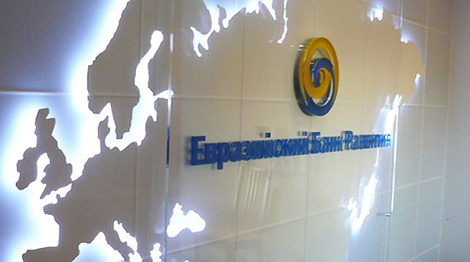Business news
EDB raises 2017 GDP growth outlook for Belarus to 1.8%
 MINSK, 20 November (BelTA) – The outlook for Belarus’ GDP growth rate in 2017 was improved to 1.8% in the quarterly Macroeconomic Review published by the Chief Economist Group at the Eurasian Development Bank (EDB), BelTA has learned.
MINSK, 20 November (BelTA) – The outlook for Belarus’ GDP growth rate in 2017 was improved to 1.8% in the quarterly Macroeconomic Review published by the Chief Economist Group at the Eurasian Development Bank (EDB), BelTA has learned.
The paper states that, as a result of improvements in regional economic growth and mutual trade, the outlook for the EDB member states’ GDP growth rates in 2017 has been revised. For Russia, a significant increase in GDP growth rates since Q2 2017 and an improved foreign and domestic macroeconomic situation resulted in an upgrade of its outlook for GDP growth in 2017 from 1.4% to 1.7%. If the foreign environment continues to be the same or advances further for the Russian economy, the balance of risks is expected to shift towards greater growth rates. Improvements in Russia’s dynamics also add impetus to other EDB member countries: the outlooks for GDP growth in 2017 were upgraded for Belarus (from 1.4% to 1.8%), Kyrgyzstan (from 3.7% to 4%), Tajikistan (from 6.2% to 7.2%), and Kazakhstan (from 3.4% to 3.7%).
The active economic recovery in 2017 also entailed revisions of economic growth prospects for 2018-2019. “We believe that improved medium-term outlooks for the region’s countries will depend, to a significant extent, on their capability to use the potential of their internal economic growth drivers,” Chief Economist of the EDB Yaroslav Lissovolik pointed out. These drivers include easing monetary policies with lower rates of central banks, the growing efficiency of public infrastructure expenditure, and structural measures to enhance labor productivity.
According to EDB analysts, the main long-term challenge for the global economy will be the continuing imbalances that provoked crises in the past ten years. The most important of them is income inequality both within the countries and between developed and developing nations. It is aggravated by weak economic integration, when regions that need integration are least involved in the globalization of world trade.
The special report attached to the review draws special attention to the de-dollarization of the EDB economies as another factor that can boost the economic environment in the region. The degree of dollarization has been declining in 2017 in all the EDB member states. This was largely due to the stabilization of exchange rates, lower inflation, improved economic activity, and recovering trust in national currencies. Belarus, Kazakhstan and Kyrgyzstan have demonstrated the most significant decline in dollarization (measured as the share of foreign currency deposits in broad money) among the EDB countries. The report suggests that these positive developments will enhance the effectiveness of the countries’ monetary policies, as well as conditions for the achievement of lower inflation rates and greater financial stability.







 print version
print version make home page
make home page add to bookmarks
add to bookmarks

